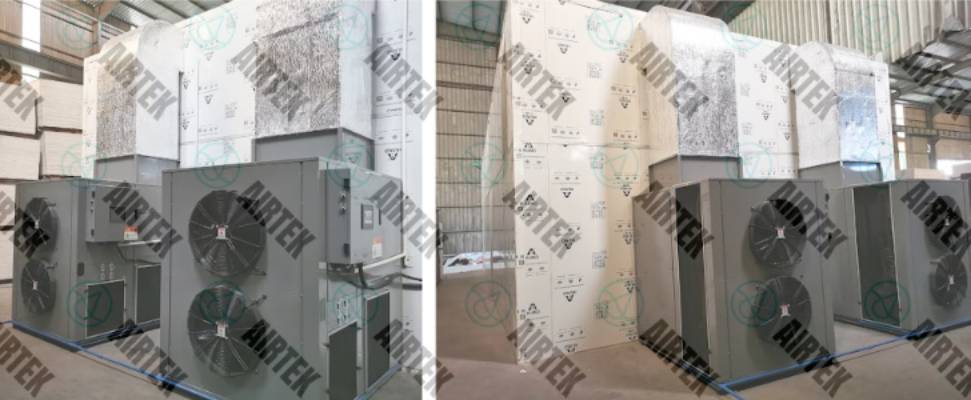The Evolution of Tobacco Curing Technology
The tobacco kiln has undergone remarkable transformations over recent decades. Traditional tobacco curing methods, while steeped in heritage, often lead to inconsistencies that modern commercial operations simply cannot afford. Today’s tobacco kiln innovations address these challenges head-on, offering revolutionary solutions that maintain the delicate balance between tradition and technological advancement.
Tobacco kiln modernisation represents a significant leap forward for commercial producers seeking reliability and consistency. These advancements have transformed what was once an unpredictable art form into a precise science, allowing manufacturers to reproduce specific flavour profiles with remarkable accuracy batch after batch.
Consistency Challenges in Traditional Curing Methods
Commercial tobacco production faces numerous obstacles when relying solely on conventional curing approaches. Weather fluctuations, humidity variations and temperature inconsistencies have historically plagued tobacco farmers, leading to substantial quality disparities between harvests.
These inconsistencies directly impact the end product’s flavour profile, market value and brand reputation. When tobacco leaves cure unevenly, the resulting product may exhibit bitterness, harshness or unwanted flavour notes that diminish its commercial appeal and reduce profitability.
Temperature Control and Energy Efficiency
Modern tobacco curing equipment offers unprecedented control over the drying environment. Precision temperature management allows operators to apply specific heat profiles that enhance desirable characteristics whilst eliminating unwanted traits in the tobacco leaves.
Energy efficiency represents another significant advancement in contemporary tobacco kilns. Heat recovery systems, improved insulation and automated climate controls dramatically reduce energy consumption without sacrificing quality. These innovations translate directly into lower operational costs and reduced environmental impact.
Humidity Management and Air Circulation
Proper moisture control stands as perhaps the most critical factor in achieving consistent tobacco quality. Advanced dehydration systems maintain optimal humidity levels throughout the curing process, preventing both over drying and insufficient moisture removal.
Enhanced air circulation technologies ensure uniform drying across the entire batch. This eliminates common problems like corner clustering or central moisture pockets that plague traditional barns. The result is remarkably consistent curing throughout the entire chamber, regardless of leaf position.
Automation and Monitoring Solutions
The integration of automated systems has revolutionised tobacco curing operations. Programmable curing cycles allow producers to replicate successful processes precisely, eliminating the guesswork that often accompanies traditional methods.
Remote monitoring capabilities enable operators to track critical parameters in real-time, making adjustments as needed without constant physical presence. This technology provides unprecedented visibility into the curing process whilst reducing labour requirements and increasing operational flexibility.
Space Optimisation and Throughput Enhancement
Modern tobacco kilns utilise space more efficiently than traditional barns, offering higher capacity within a smaller footprint. This spatial efficiency proves especially valuable for facilities with limited expansion options or urban-adjacent operations facing space constraints.
Increased throughput capabilities represent another advantage of contemporary systems. By reducing curing times without sacrificing quality, producers can process more tobacco within the same operational timeframe, increasing seasonal capacity and overall production efficiency.
Return on Investment Considerations
The initial investment in modern tobacco kiln technology often raises questions amongst producers accustomed to traditional methods. However, careful analysis reveals that operational savings typically offset upfront costs within a surprisingly short timeframe.
Reduced energy consumption, lower labour requirements and decreased product wastage contribute significantly to this favourable economic equation. Furthermore, the premium quality achieved through consistent curing often commands higher market prices, further accelerating return on investment.
Environmental Sustainability Benefits
Modern tobacco curing technologies align with growing environmental consciousness within the industry. Reduced energy consumption directly translates to lower carbon emissions, whilst more efficient processes minimise waste generation throughout the production cycle.
Some advanced systems incorporate renewable energy options, allowing producers to further reduce their environmental footprint. These sustainability benefits increasingly resonate with both regulatory requirements and consumer preferences in today’s market landscape.
Adaptability to Different Tobacco Varieties
Commercial tobacco production encompasses numerous varieties, each with distinct curing requirements. Contemporary kilns offer unprecedented adaptability, allowing operators to fine-tune parameters specifically for flue-cured, air-cured, fire-cured or other specialist tobacco types.
This versatility proves particularly valuable for producers working with multiple varieties or those exploring emerging market opportunities. The ability to optimise curing protocols for different leaf types represents a significant competitive advantage in today’s diverse tobacco market.
Quality Assurance and Product Consistency
Commercial tobacco producers understand that their brand reputation hinges on consistent quality. Modern curing technologies deliver precisely that—batch after batch of tobacco with identical moisture content, colour profile and flavour characteristics.
Advanced quality control features allow operators to monitor and adjust specific parameters that influence the end product’s sensory attributes. This level of precision ensures that commercial products maintain their distinctive character regardless of external variables.
Conclusion
The evolution of tobacco kiln technology represents a pivotal advancement for commercial producers seeking both quality and efficiency. By embracing these innovations, manufacturers can achieve unprecedented consistency whilst reducing operational costs and environmental impact. As consumer expectations for product quality continue to rise, investing in modern curing technology isn’t merely an option—it’s becoming essential for competitive viability in today’s tobacco market.

